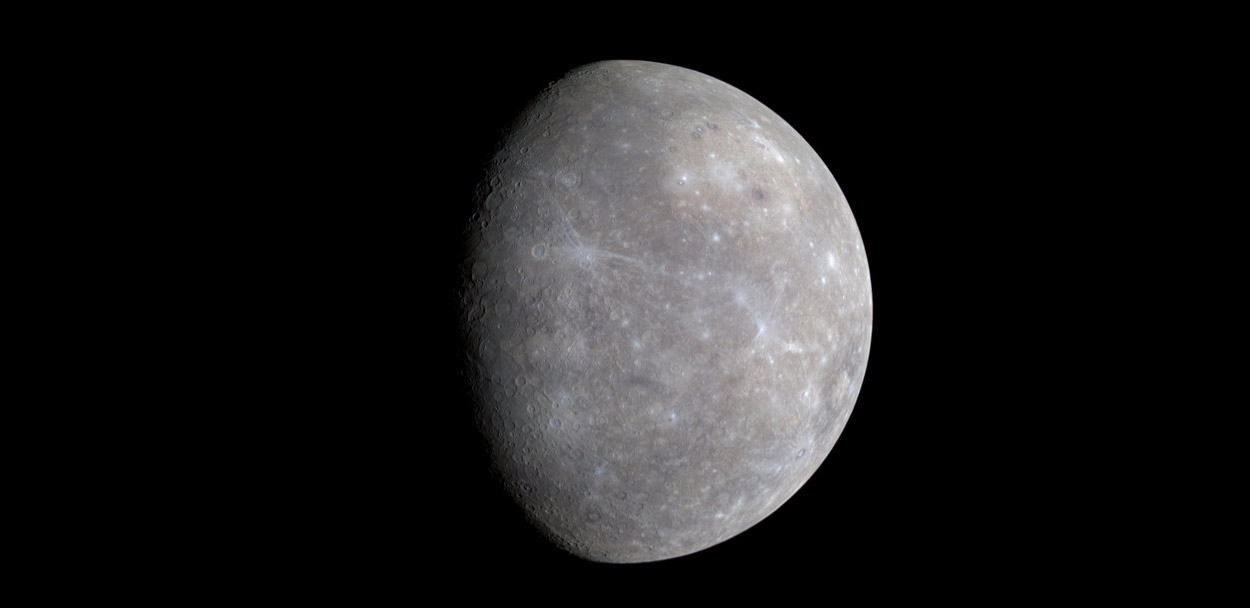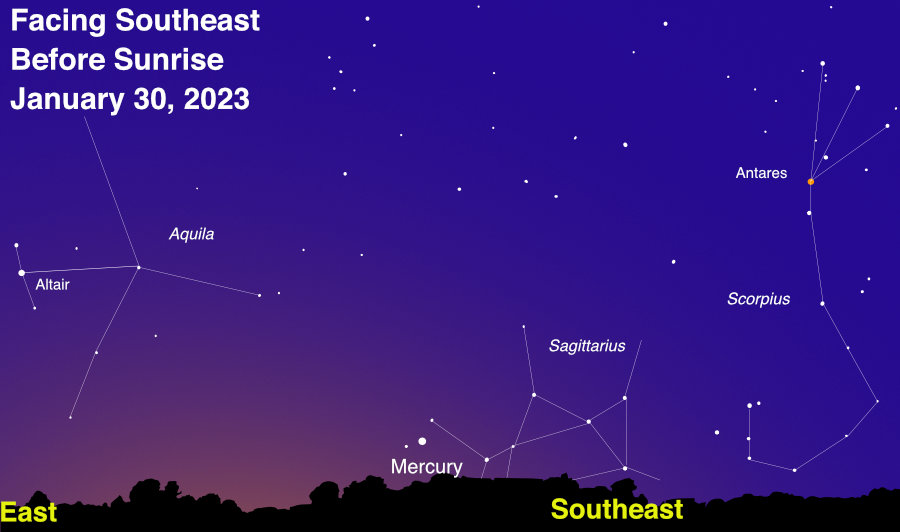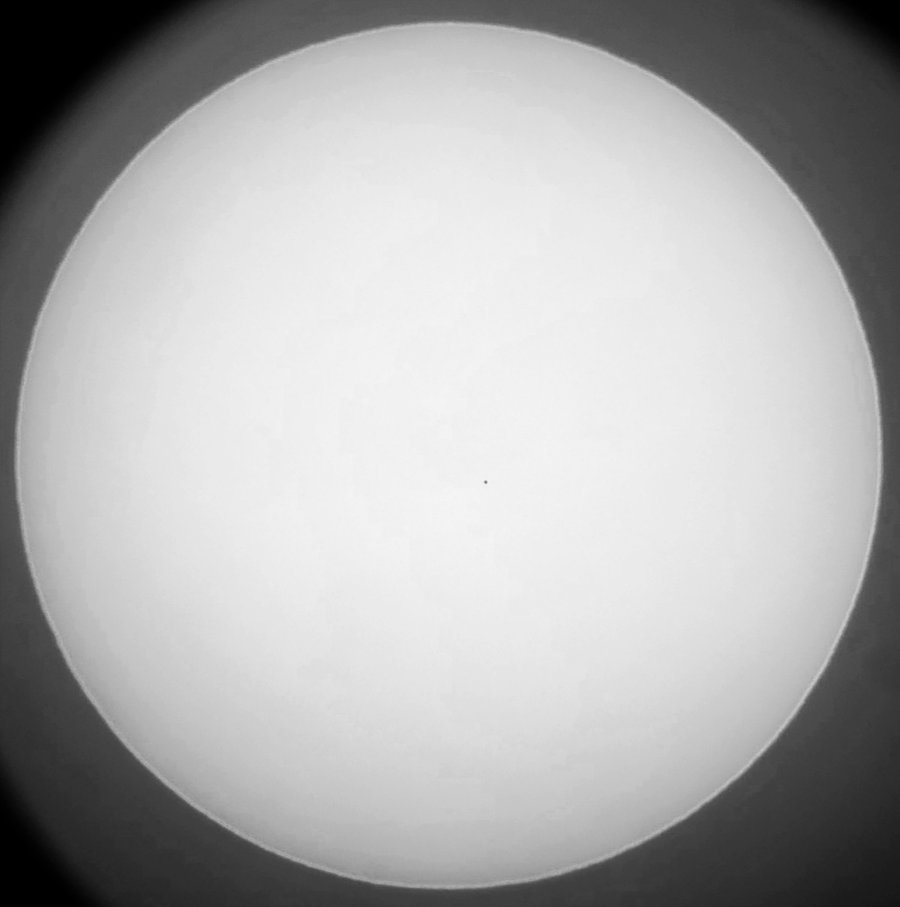
Spot the Messenger: Observe Mercury
January 2023 :
Most planets are easy to spot in the night sky, but have you spotted Mercury? Nicknamed the Messenger for its speed across the sky, Mercury is also the closest planet to the Sun. Its swift movements close to our Sun accorded it special importance to ancient observers, while also making detailed study difficult. However, recent missions to Mercury have resulted in amazing discoveries, with more to come.

Mercury can be one of the brightest planets in the sky – but also easy to miss! Why is that? Since it orbits so close to the Sun, observing Mercury is trickier than the rest of the “bright planets” in our solar system: Venus, Mars, Jupiter, and Saturn. Mercury always appears near our Sun from our Earth-bound point of view, making it easy to miss in the glare of the Sun or behind small obstructions along the horizon. That’s why prime Mercury viewing happens either right before sunrise or right after sunset; when the Sun is blocked by the horizon, Mercury’s shine can then briefly pierce the glow of twilight. Mercury often appears similar to a “tiny Moon” in a telescope since, like fellow inner planet Venus, it shows distinct phases when viewed from Earth! Mercury’s small size means a telescope is needed to observe its phases since they can’t be discerned with your unaided eye. Safety warning: If you want to observe Mercury with your telescope during daytime or before sunrise, be extremely careful: you don’t want the Sun to accidentally enter your telescope’s field of view. As you may already well understand, this is extremely dangerous and can not only destroy your equipment, but permanently blind you as well! That risk is why NASA does not allow space telescopes like Hubble or the JWST to view Mercury or other objects close to the Sun, since even the tiniest error could destroy billions of dollars of irreplaceable equipment.
Despite being a small and seemingly barren world, Mercury is full of interesting features. It’s one of the four rocky (or terrestrial) planets in our solar system, along with Earth, Venus, and Mars. Mercury is the smallest planet in our solar system and also possesses the most eccentric, or non-circular, orbit of any planet as well: during a Mercurian year of 88 Earth days, the planet orbits between 29 million and 43 million miles from our Sun – a 14-million-mile difference! Surprisingly, Mercury is not the hottest planet in our solar system, despite being closest to the Sun; that honor goes to Venus, courtesy its thick greenhouse shroud of carbon dioxide. Since Mercury lacks a substantial atmosphere and the insulating properties a layer of thick air brings to a planet, its temperature swings wildly between a daytime temperature of 800 degrees Fahrenheit (427 degrees Celsius) and -290 degrees Fahrenheit (-179 degrees Celsius) at night. Similar to our Moon, evidence of water ice is present at Mercury’s poles, possibly hiding in the frigid permanent shadows cast inside a few craters. Evidence for ice on Mercury was first detected by radar observations from Earth, and followup observations from NASA’s MESSENGER mission added additional strong evidence for its presence. Mercury sports a comet-like tail made primarily of sodium which has been photographed by skilled astrophotographers. The tail results from neutral atoms in its thin atmosphere being pushed away from Mercury by pressure from the nearby Sun’s radiation.
NASA’s Mariner 10 was Mercury’s first robotic explorer, flying by three times between 1974-1975. Decades later, NASA’s MESSENGER first visited Mercury in 2008, flying by three times before settling into an orbit in 2011. MESSENGER thoroughly studied and mapped the planet before smashing into Mercury at mission’s end in 2015. Since MESSENGER, Mercury was briefly visited by BepiColombo, a joint ESA/JAXA probe, which first flew by in 2021 and is expected to enter orbit in 2025 - after completing six flybys. Need more Mercury in your life? Check out NASA’s discoveries and science about Mercury at solarsystem.nasa.gov/mercury/, and visit the rest of the universe at nasa.gov.

Mercury is hot, small, and heavily cratered across its gray surface, as seen in this image from NASA MESSENGER. Mercury is the most heavily cratered planet in our solar system, since it lacks either a substantial atmosphere or geologic activity to erode surface features like craters - similar in certain aspects to the surface of our own Moon.
Credit: NASA/Johns Hopkins University Applied Physics Laboratory/Carnegie Source: https://solarsystem.nasa.gov/resources/439/mercurys-subtle-colors/



